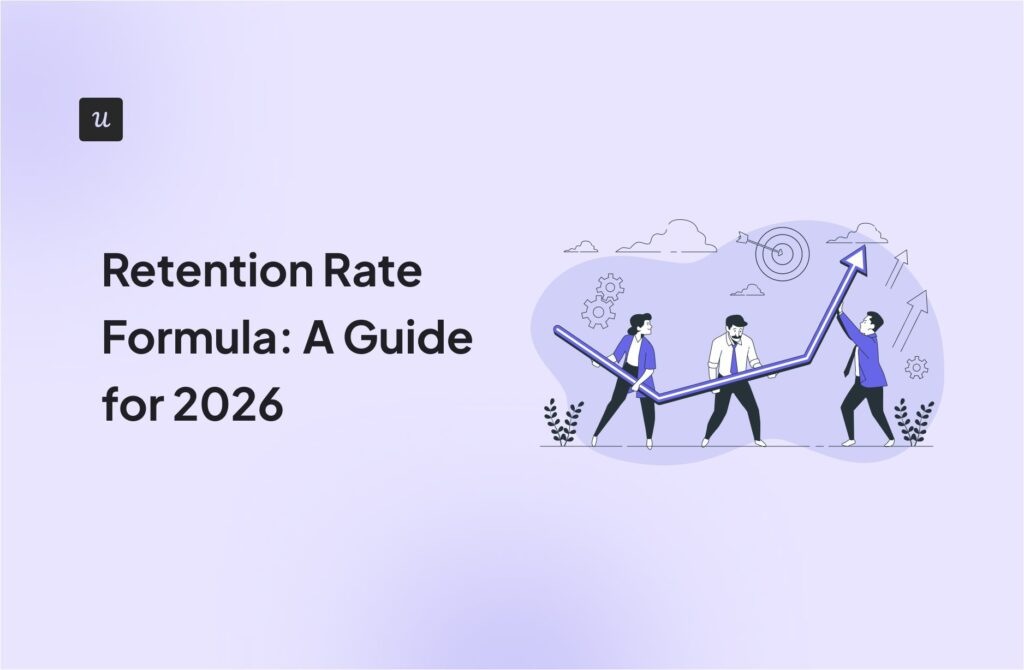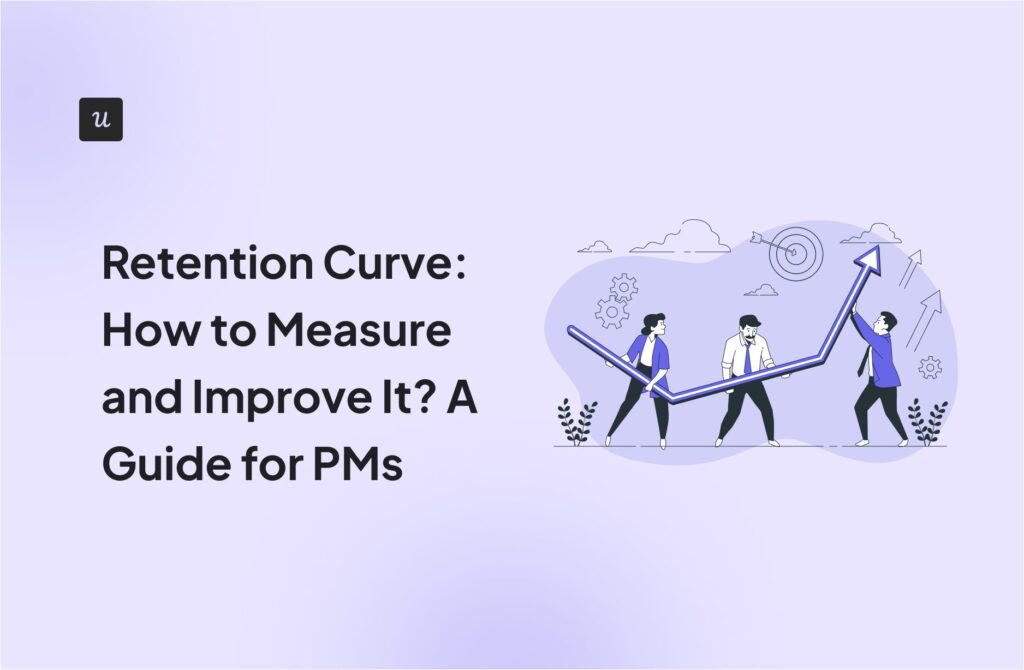
Average Customer Retention Rate By Industry & How to Improve Your SaaS Retention Rate
Understanding the average customer retention rate for your industry is critical to determining the health of your business. It tells you whether your customer retention rate is too low or just good enough.
If customers are the lifeblood of any business, then customer retention is the glue that holds it all together. However, the average customer retention rate by industry varies wildly.
This article explores the latest customer retention statistics across different industries and highlights tips to help you define a winning customer retention strategy.
Try Userpilot Now
See Why 1,000+ Teams Choose Userpilot

TL;DR
- Customer retention rate (CRR) measures the percentage of existing customers remaining after a period versus the total number of existing customers at the start of the given period.
- According to available retention data, the media industry and professional service providers enjoy the highest average customer retention rate by industry (84%), while the travel and hospitality industries have the lowest (55%).
- SaaS companies generally enjoy a high retention rate, with an average CRR of about 90%.
- CRR is often influenced by multiple factors, from customer service to customer experience and anything that impacts customer satisfaction.
Retention strategies that can improve your CRR include:
- Segmenting customers and creating personalized experiences to increase the customer’s lifetime value.
- Creating a robust knowledge base to provide 24/7 support that exceeds customer expectations.
- Using checklists and interactive walkthroughs to drive product adoption.
- Using surveys like the NPS survey to collect user feedback and identify areas of improvement.
- Collecting feature requests to determine feature changes or identify new features to build.
- Implementing churn surveys to understand the reasons for churn and reduce the churn rate.
- Userpilot provides features and tools that help companies focus on creating the right environment for customer success. Book a demo to learn how it works.
How do you measure customer retention rate?
Customer retention refers to a company’s ability to hold on to (or retain) its customers over time.
The customer retention rate (CRR) is a percentage measure of the retained customers at a company at the end of a period.
You can calculate the CRR for any given period using three key variables:
- T – The total number of customers at the end of the period.
- N – The number of new customers at the end of the period.
- S – The number of customers at the start of the period.
It is calculated as: ([T – N] / S) x 100
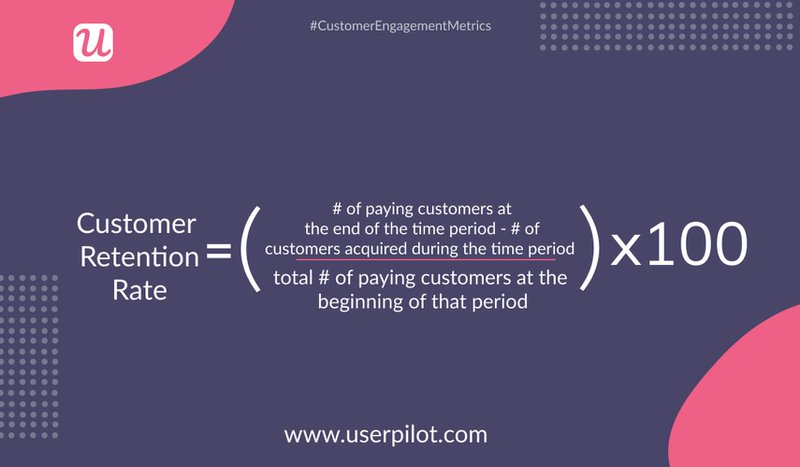
So, imagine an insurance company that wants to calculate its CRR for three (3) months. It started the period with 180 customers (S), acquired 40 new customers (N) during the period, and had 200 customers (T) at the end of the period.
Its CRR will be:
([200 – 40] / 180) x 100 =
160/180 x 100 ≈ 90%
High retention rates signal that customers are happy with the business and are eager to do business with you again and recommend your brand to others. Therefore, the higher the customer retention rate, the better your business health.
Customer retention rates by industry
Of course, the ideal retention rate is 100%. This would mean that you’re maximally retaining existing customers. But this number is hardly attainable.
So, what’s the average customer retention rate for your industry?
According to the latest customer retention statistics, the average customer retention rate across industries is 75%. The average retention rate for different industries comes out as follows:
- The IT & Software Industry: 77%
- Banking: 75%
- Media Companies: 84%
- Insurance Companies: 83%
- IT Services: 81%
- Construction & Engineering: 80%
- Manufacturing: 67%
- Retail Industry: 63%
- Professional Services: 84%
- Automotive & Transportation: 83%
- Hospitality, travel, and restaurant: 55%
- Financial Services: 78%
- Telecommunications: 78%
- Healthcare: 77%
- Consumer Services: 67%
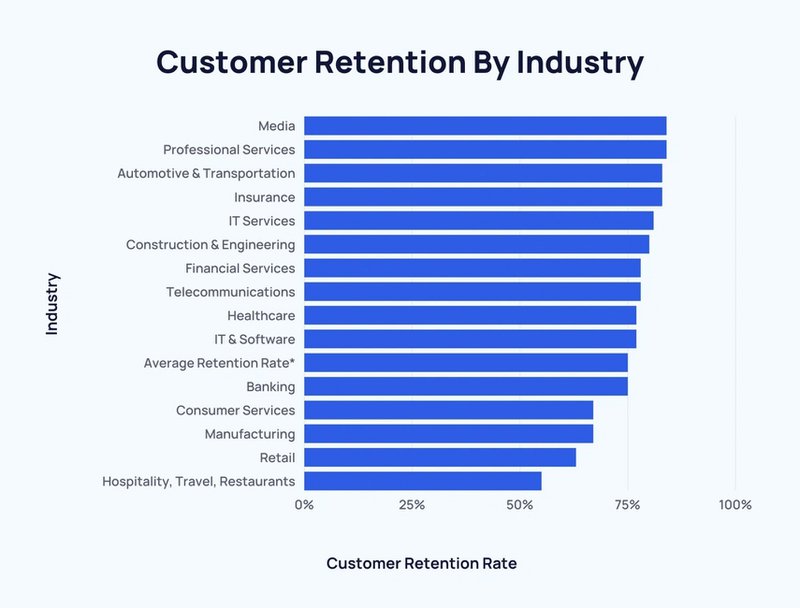
Lowest customer retention rate by industry
At 55%, the hospitality industry, alongside the travel and restaurant industries, has the lowest customer retention rates of any industry.
Highest customer retention rate by industry
On the opposite end of the spectrum, media companies and professional services have the highest retention rate for any industry, with 84% CRR. The automotive and insurance industries are a close second, with 83% CRR.
What is a good retention rate for SaaS companies?
The entire SaaS business model is built around retaining customers for the long term. As a result, SaaS businesses typically enjoy high retention rates.
With this in mind, 90% is generally a good SaaS retention rate to aim for. However, rates can get as high as 97%, often rising and falling fairly consistently.
Factors influencing customer retention rates
Only reasonably satisfied customers willingly stick with a brand over any period. To understand customer retention, therefore, you must first understand what factors drive customer satisfaction. Consider a few.
- Customer service: Poor customer service encourages churn. On the other hand, personalized customer service gives you a human face and sets you apart from the competition.
- Customer success: Customer success is critical to customer satisfaction. Customers who successfully address their pain points with your product will stick with you.
- Customer experience: A positive customer experience with no hassles or service downtimes encourages customers to continue with your product.
- Customer expectations: When user expectations are met or exceeded, they’re delighted to stick with you.
Retention Strategies to improve customer retention rate
There are three steps to improving your customer retention rate. First, you need to determine your current rate. Then, you need to set a benchmark retention rate. And finally, you need to develop customer retention strategies to raise your rates.
The first two have already been considered. Let’s take a closer look at the third.
Increase customer lifetime value with personalization
The customer lifetime value measures the total revenue a customer brings you over their time with you. LTV optimization helps increase customer retention and boost revenue generation.
Thanks to the endless stream of available data today, LTV optimization through personalization is easier than ever before.
Use welcome surveys to collect data about your customers, and better understand their needs, and goals with your product. Then, segment users according to their JTBDs or product/feature usage data (later in the journey) and deliver personalized experiences to each group.
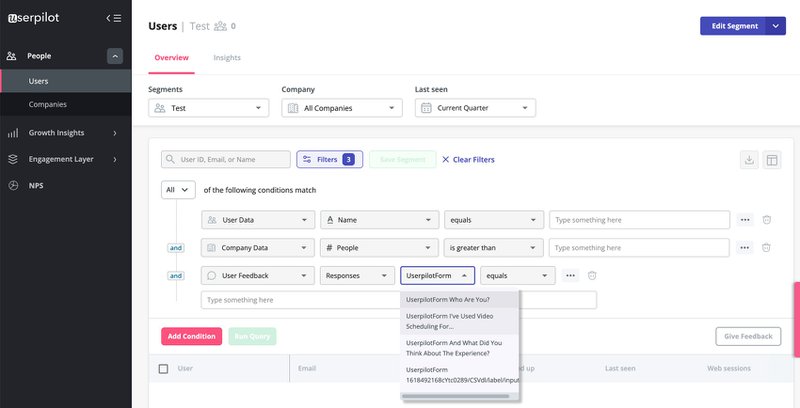
You can do so by showcasing to them the key features they will need to complete their JTBDs, or contextually prompt feature discoveries, interactive walkthroughs, and much more.
Exceed customer expectations with a good customer service
Exceeding customer expectations is critical to keeping customers engaged and delighted. Delighted customers see you as “overdelivering” on your promise and are happy to spread the word.
One way to drive customer delight is by delivering good customer service that will be accessible on-demand.
Create a knowledge base that combines different resource formats and helps users troubleshoot at any time.
Your knowledge base should be easy to find and should be structured into modules or according to JTBDs for easy navigation. You can also add a search bar to allow users to find their desired solutions faster.
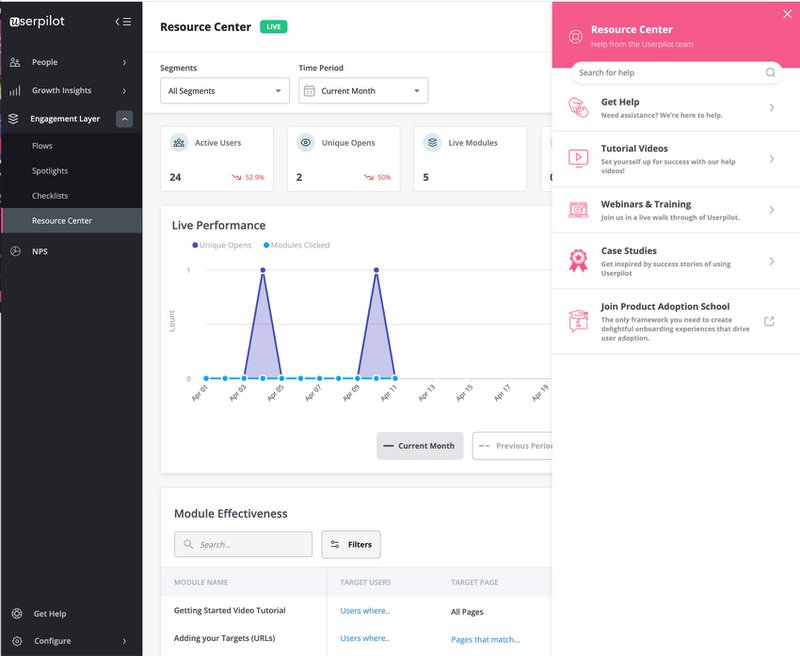
Tip💡: Create (and display) different training modules for different user segments and their different use cases.
Implement a checklist to drive product adoption
Your first task after acquiring customers is to get them to adopt the product. This involves getting users comfortable with your product so its usage becomes a habit.
You can effectively drive product adoption by including an onboarding checklist to motivate users to explore your product. A checklist helps new customers to identify key features of the product and begin deriving value from them right away.

When used correctly, a checklist guides the new user through all the actions they must complete to reach the Aha! moment. It should, thus, be simple, action-oriented, and motivating to complete.
Drive product adoption with interactive walkthroughs
Interactive walkthroughs are excellent tools for prompting action and driving product adoption. These on-screen tutorials provide in-app guidance to users on how to use a product or a feature.
Unlike product tours, walkthroughs are personalized to the user’s needs. They’re short and engaging, showing the user how easily they can get value from the product/feature by having them take action.
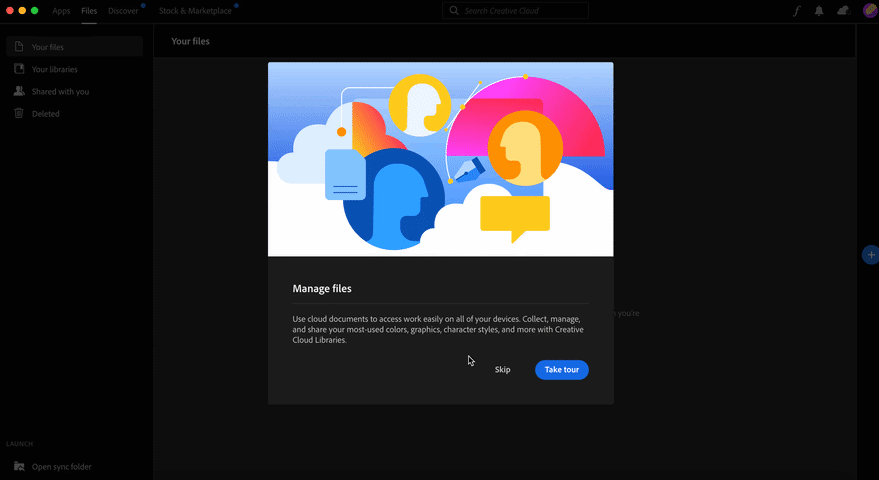
For your onboarding walkthroughs to be effective, segment users using the information they provide on the welcome screen, then trigger a targeted walkthrough that guides them to the activation point.
Increase the number of loyal customers
Essential to customer retention is customer loyalty. Loyal customers are like a pool of die-hard fans committed to your brand and not easily swayed by slightly better terms from competitors.
So, prioritizing creating, and keeping loyal customers will help you increase your retention rate.
Use NPS surveys to determine the number of loyal customers you have. NPS surveys help you identify your promoters and detractors.
Tag NPS responses to identify the reason(s) for any dissatisfaction among customers. Then, work on fixing them in order to turn detractors into promoters.
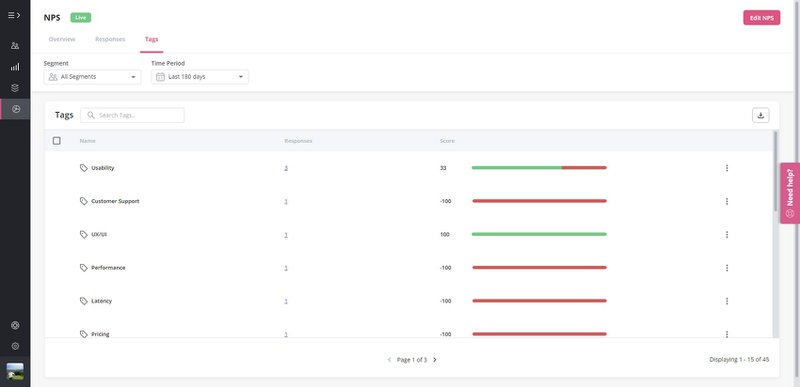
You can also drive up your customer retention rates by implementing loyalty programs for promoters to incentivize their actions.
Collect feedback from existing customers and improve customer satisfaction
Every existing customer is a treasure trove of information about your product. In-app surveys allow you to gather feedback from them and harvest this information.
For instance, you can use customer satisfaction surveys to determine how satisfied users are with your product/brand and identify areas for improvement.
As you fix identified issues and inform customers accordingly, you’ll improve customer retention for your business.
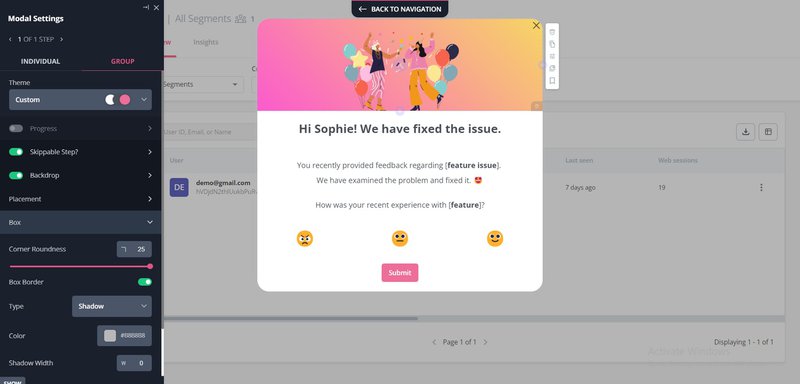
Prioritize product development with feature requests
Drive customer loyalty by getting customers involved in the product development process.
Use feature requests to collect suggestions from users on changes that can improve the product experience.
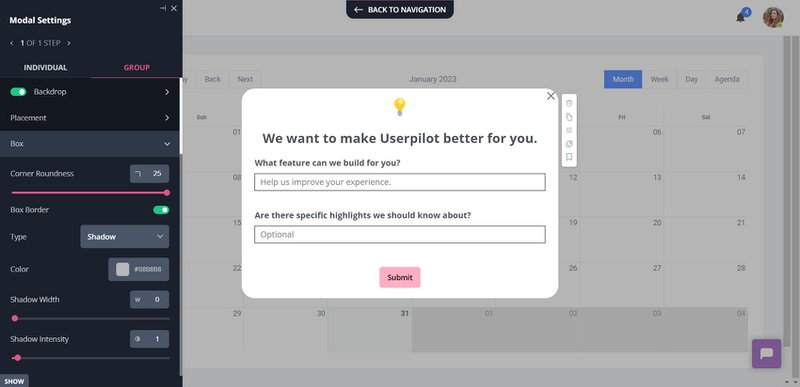
Accordingly, you want to show customers that you care about their opinion by prioritizing these requests and working to implement frequently requested features.
Use churn surveys to minimize churn rate
To attain a high customer retention rate you must first lower the churn rate. This means that you must identify churn risks and act on them to turn at-risk customers into retained customers.
One way to do this is by using churn surveys to identify the most common reasons for customer churn and proactively address them to keep other users from leaving.
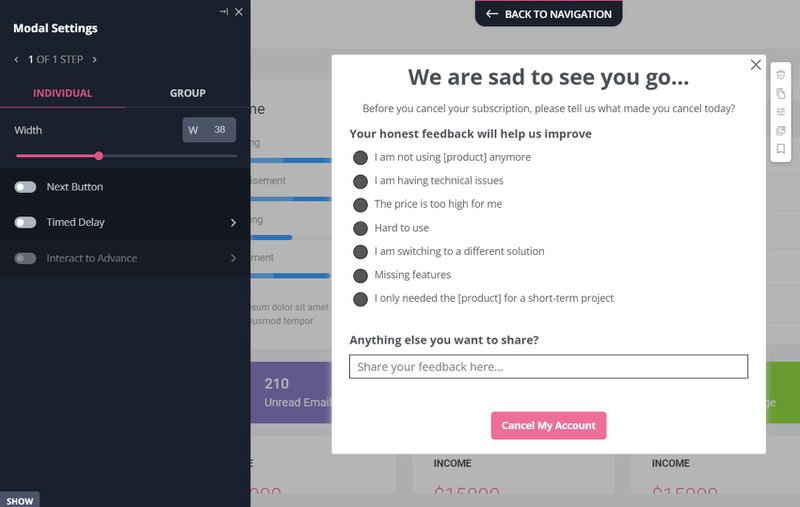
How to improve retention rates with Userpilot
Userpilot is a customer retention software that boosts customer success and drives product adoption.
As a powerful no-code tool, it provides you with all the features needed to successfully retain customers. This includes:
- Segmentation: Create bespoke personalized experiences for your users with Userpilot’s smart segmentation feature. Segment users around demographic data, company data, feature usage parameters, engagement profiles, etc.
- In-app surveys: Improve the product for current customers by listening to their experience. Choose when and where surveys appear in-app and review response data for any survey conducted with Userpilot.
- NPS dashboard: Track customer loyalty and advocacy levels using NPS surveys. Identify your promoters/advocates, detractors, and passives and track your progress over time on a simple dashboard.
- Analytics: Understand user behavior through in-app analytics tracking. Track product usage data, feature adoption, etc. Identify at-risk customers and work to lower the churn rate.
- Checklist and resource center: Create a checklist and resource center to guide and support your users. Userpilot’s robust resource center lets you create multiple modules, personalize its content, and include various content types.
- Mobile App Engagement: Onboard and engage mobile app users by creating personalized messaging, push notifications, and surveys with Userpilot.
Conclusion
A clear retention strategy is required to achieve widespread customer success and boost customer retention.
First, though, you must create a benchmark rate for yourself based on your industry’s average customer retention rates.
Once that’s done, Userpilot provides you with the tools to implement your preferred retention strategies. Why not book a Userpilot demo today and see how you can begin driving product growth right away?


